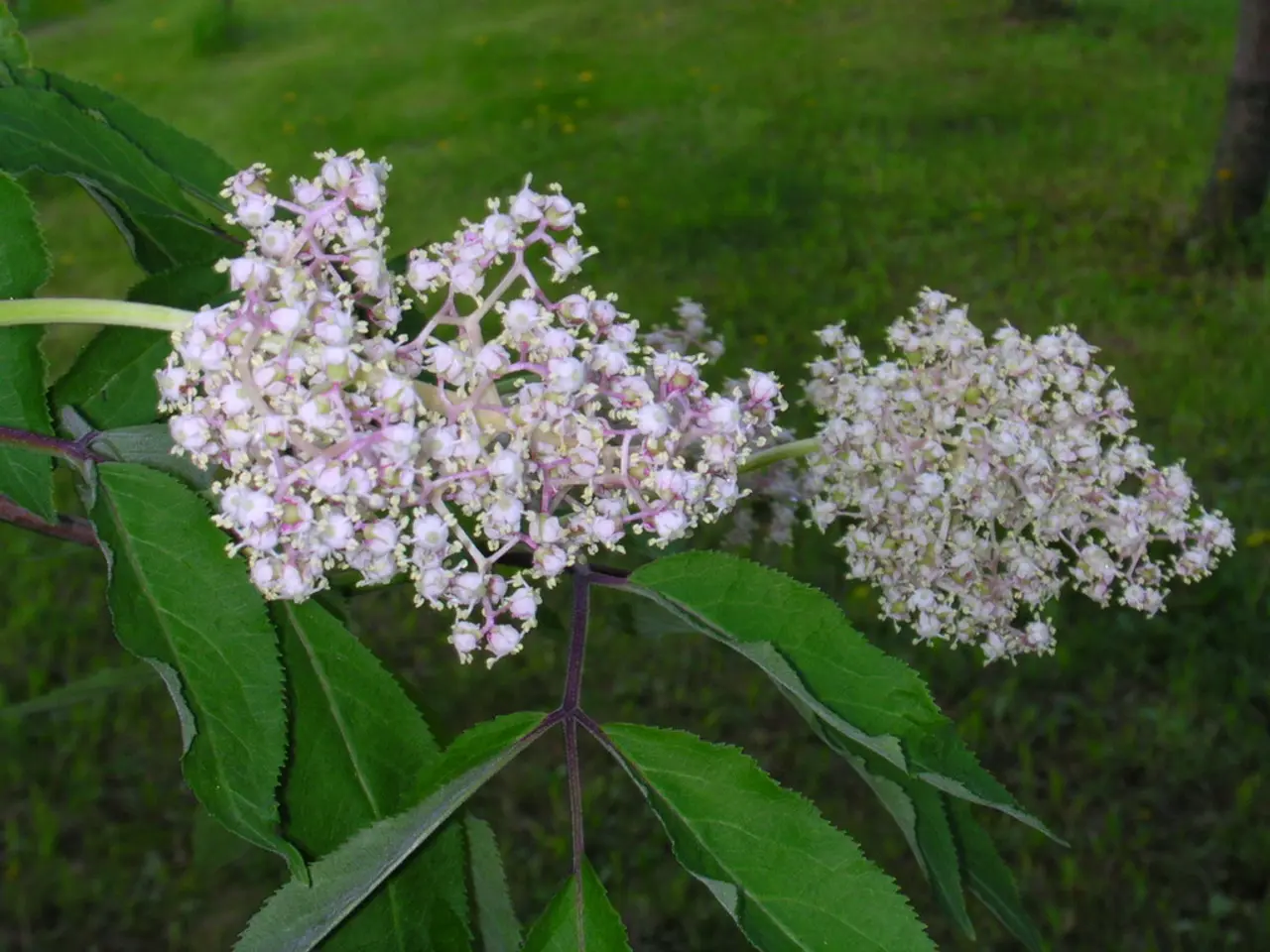Managing the Spread of Ground Ivy (Creeping Charlie): Strategies for Eradication and Prevention
In the battle against ground ivy, also known as creeping Charlie, understanding the best methods for control is crucial. This invasive perennial weed can be a nuisance in both lawns and garden beds, but with the right approach, it can be effectively managed.
For lawns, the recommended strategy is to apply selective post-emergent broadleaf herbicides. These herbicides, such as 4-Speed XT, Celsius, Tenacity, and Triad Select, are designed to specifically target ground ivy while sparing lawn grasses. Products like 4-Speed XT contain a blend of pyraflufen, triclopyr, 2,4-D, and dicamba, offering fast-acting results in 24-48 hours.
The optimal time to apply these herbicides is in the fall, when ground ivy translocates energy to its roots for winter. This stage enhances herbicide uptake and long-term control. Multiple applications might be necessary depending on infestation severity and herbicide used.
When applying herbicides, it's important to use them with added surfactant and dye to improve coverage and uptake. Proper mowing, fertilization, and other good management practices should help establish a thick, healthy lawn to discourage future invasions of ground ivy.
In garden beds or mixed plantings, herbicides with broad-spectrum control, like those containing triclopyr, are effective. However, caution is needed to avoid damaging desirable plants. Manual removal, mulching, and shade management are also effective control methods in these areas.
Ground ivy spreads by seed and the vining stems (stolons) which root at their nodes. Persistent removal over several growing seasons may eliminate the weed or keep populations low. The leaves of ground ivy are round or kidney-shaped with scalloped margins, and it produces a minty odour when cut or crushed.
Flowers of ground ivy are small, bluish purple, and funnel-shaped. Ground ivy thrives in damp, shady areas, but also grows well in sunny locations. An excellent fertilizer program for Kentucky bluegrass lawns consists of applications of 1 pound of nitrogen per 1,000 square feet in late April/May, September, and late October/early November.
A good nitrogen fertility program can help control ground ivy in lawns, with 3 to 4 pounds of nitrogen per 1,000 square feet per year recommended. Effective broadleaf herbicide products for controlling ground ivy include those containing 2,4-D, MCPP, dicamba, and triclopyr, with triclopyr and 2,4-D being the most effective.
Non-selective herbicides should be used with care, applied as a spot treatment to only the ground ivy, and with barriers or protective measures to prevent damage to nearby plants.
In conclusion, with the right herbicides, application timings, and cultural practices, ground ivy can be effectively managed in both lawns and garden beds. Fall is the optimal time to apply selective post-emergent herbicides, with multiple treatments often needed for dense infestations. Complementary cultural practices such as shade reduction and mowing practices enhance long-term success.
- In garden beds or mixed plantings, it's crucial to use herbicides with broad-spectrum control, like those containing triclopyr, to effectively manage ground ivy, while also exercising caution to avoid damaging desirable plants.
- For lawns, a recommended strategy is to apply selective post-emergent broadleaf herbicides, such as 4-Speed XT, Celsius, Tenacity, and Triad Select, during the fall to achieve long-term control of ground ivy, especially when the weed is translocating energy to its roots for winter.
- Complementary to the application of herbicides, good management practices such as proper mowing, fertilization, and establishing a thick, healthy lawn can help discourage future invasions of ground ivy.
- Manual removal, mulching, and shade management are also effective control methods in garden beds and mixed plantings, especially when combined with careful herbicide use to limit damage to desirable plants.
- Persistent removal of ground ivy over several growing seasons, focusing on the vining stems that root at their nodes and the seeds, may eliminate the weed or keep populations low, making it an effective non-chemical control method.




